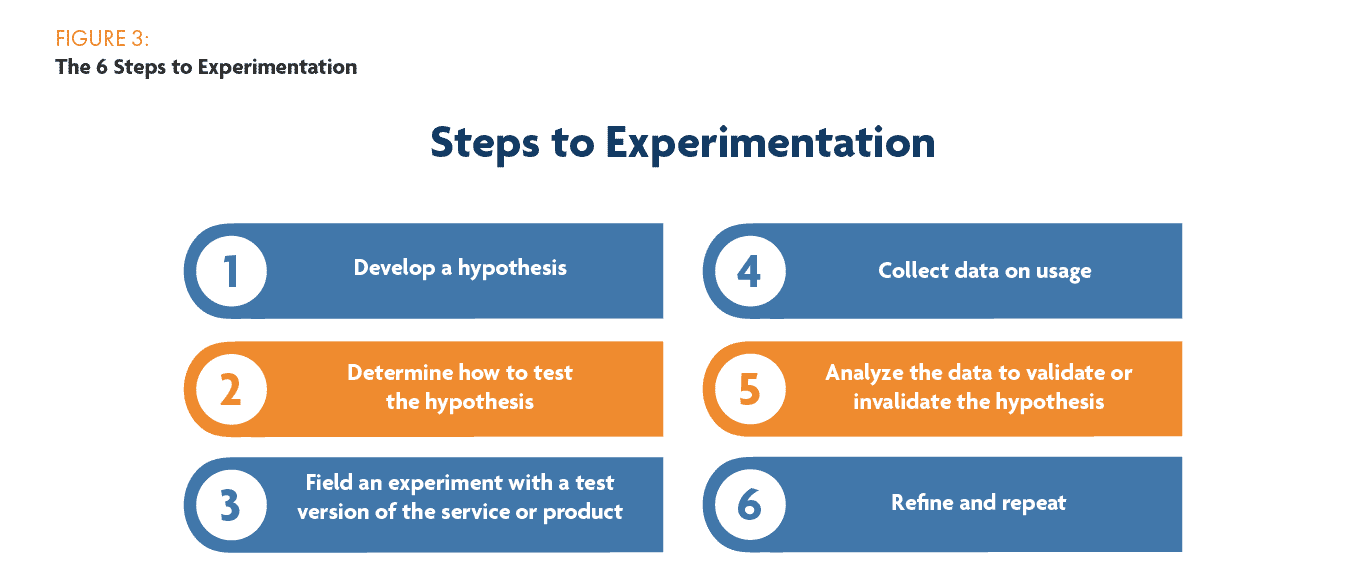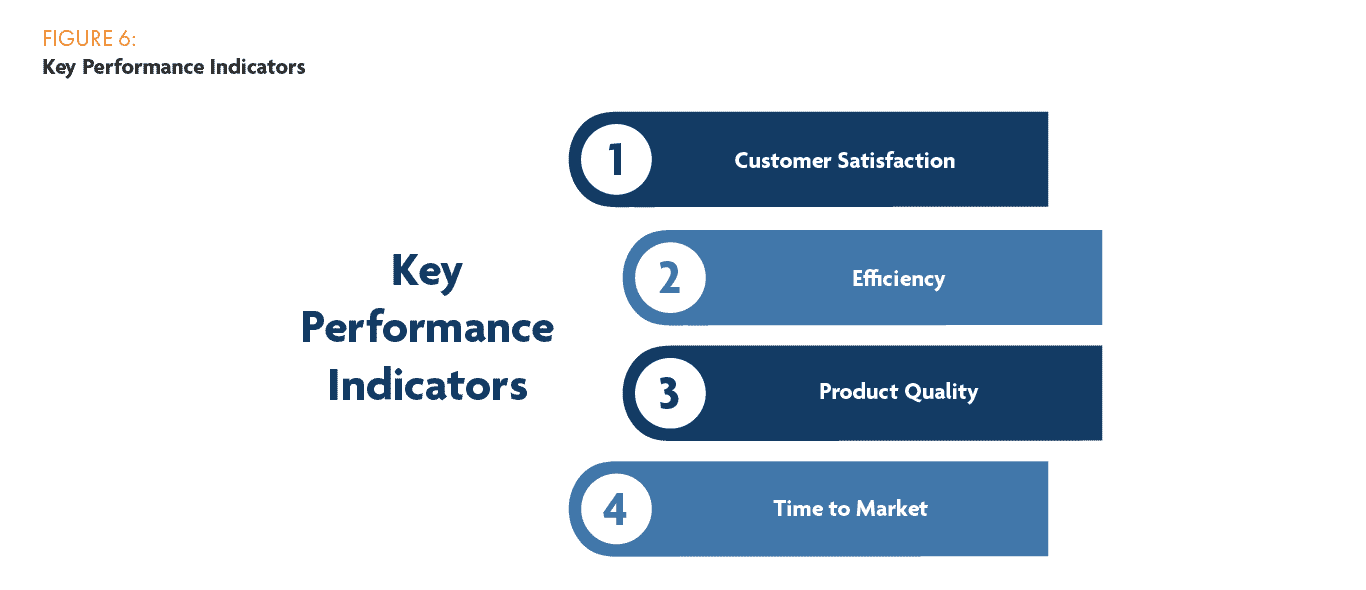Introduction
Here at Mod Op Strategic Consulting, we’ve written extensively about the mechanics of making the leap to becoming an effective digital organization. Every day, we’re helping clients build and execute digital strategies to help them continue to grow and scale their businesses. We’re working with them to launch and manage digital products and services to better serve their customers. And we’re guiding them through the plans for effective technology strategies that will allow them to execute on their most ambitious visions.
But before any CEO is ready to approach all of those tactical decisions and opportunities, there’s a more fundamental question to ask:
Why Digital?
This guide is about why every CEO needs to be thinking about digital transformation, what it means — for the present and the future of your organization — and how to begin to understand what a digital organization looks like, and how you can get your enterprise moving in the right direction.
By reading this, we aim to provide you with a set of key takeaways:
- What we mean by digital transformation and why it’s so important to every organization
- The elements of a modern, digital-focused operating model
- How to leverage the power of data
- Why building a digital culture is so critical — and yet so challenging
- Where to begin, and how to get started

We get it. Few leaders are ever looking to overhaul their entire organization. Clients don’t come to us and demand, “make us digital!” Instead, they come to us with a business problem: our customers want something that we’re not equipped to provide; our infrastructure is running out of capacity; our competition is doing something that we’re not currently capable of; we see opportunities to innovate but we just don’t have the tools, systems, or people we need to execute effectively.
What we realize when we dive in — and what our clients realize as we work to find the root of the problem — is that the solutions to most of these issues come back to a fundamental disconnect between the way the world of commerce is evolving today and the legacy systems and processes that most organizations have in place.
Digital is the mindset for how organizations have to operate to succeed today, in an environment where customers and partners (not to mention employees) expect business to be conducted online, frictionless, in a personalized way, and through a self-service platform. The fact is that even the most traditional firms are communicating with clients and distributors via e-mail, storing their documents in the cloud, transacting via electronic payments, and managing manufacturing, inventory, and logistics with sophisticated resource planning systems. These are all digital functions.
And that’s ignoring the strategic element — which is critical for growth and survival. Digital is the framework for how you can collect, organize, and deploy the data that is required to inform better business strategies, go beyond the baseline commercial requirements, and actually achieve success as an effective, modern organization.
Layered on top of that vision, technology then becomes not the driver of change but the tool to make sustainable change a reality.
‘Putting it all together, Digital Transformation is simply the road toward making your organization function optimally in today’s world — and ready to adapt to a rapidly-changing future.

The Digital Operating Model
A digital operating model is about agility, experimentation, automation, integration, and data. We’ve written before about how agility is so important for organizations. Only 52 companies have maintained their place on the FORTUNE 500 list since its inception in 1955. Those companies have lasted thanks to their ability to adjust quickly and effectively as the world has changed around them.
Agility means responding to needs and market shifts before your competitors, and turning even the biggest ship around quickly. It means identifying what consumers want and delivering on it successfully. That means constant customer feedback, corporate structures that allow for innovation, and a culture that supports and even embraces change.
You need what we call organizational ambidexterity: the ability to build the right thing, build the thing right, and build the thing fast, keeping one foot in the present (to maintain your day-to-day success) and one foot in the future (always driving to the next new level).
One of the ways you get there is through experimentation. Organizations need to evolve an increasingly sophisticated portfolio of online products and services to meet growing needs and demands of customers. Doing this successfully requires iterative methods to ensure ongoing alignment with user needs. In practice, this means a rough series of steps:

Experiment, iterate, and productize. Then seek constant constructive feedback from customers. That’s how a digital business operates. And while a wide range of tools and services exist to help support this approach, the greatest barrier often lies in organizational culture — namely, the attitudes and norms of senior and front-line staff — which we explore in more detail later on in this guide.
Automation is the next element of a modern digital model. Success in today’s world means freeing up staff to apply their talents to innovation and other high-value-creating activities. That requires minimizing the low-value, repetitive operational tasks that often take considerable staff energy: processing invoices, basic HR functions, website content updates, and so much more.
Modern organizations apply automation broadly across the business — to not only free up staff resources, but also to improve process quality and responsiveness. Organizations can begin by automating a single process and then expand into other areas as the value proves itself. Again, culture is often the biggest barrier: staff need to be reassured that automation is not being implemented to eliminate their jobs but rather to enable them to create more value for the organization (and compensation incentives ought to follow).
Underlying all of this is the need for deep integration across the organization. Businesses that are run as a set of siloed departments, with handoffs between them, are unable to execute on opportunities as effectively as organizations where information flows freely. Marketing, design, and product management all need to have access, see the same data in real-time, be driven by the same incentives, and work collaboratively toward a coherent and strategic big picture.
Finally — and perhaps most important of all — a modern organization must be driven by real-time data as the foundation for decision making.

The Power of Data
For a digital business, data is the lifeblood. Data has the power to inform products, pricing, marketing, and every other aspect of a business. Connected data that flows seamlessly throughout an organization is critical to success — not to tell you the right answer to a question but to give you the information that, combined with the perspectives and experience of skilled staff, can radically accelerate performance.
Most organizations are swimming in data, but far too often that data is incomplete or disconnected. Critical insights often come from the correlation of disparate sets of data, whether that means transactional data, behavioral data, or third-party datasets from outside that can provide deep insights into the trends and developing needs of potential users and customers.
One of the greatest powers of quality data is that it enables you to get personal, and deliver customers an experience tailored to their own unique needs and desires. Expectations are rising in our world today. To remain competitive and in front of the curve, companies are racing to make personalization the centerpiece of their product and go-to-market strategies.
Superior personalization can allow companies to differentiate themselves and challenge competitors by attracting and winning customers — without necessarily making price concessions (and in fact sometimes charging a premium). But competing through personalization is impossible unless a company can collect, analyze, and act (most often instantly) on data.
Data is also critical internally, in what we call operations excellence, informing strategic decisions and day-to-day operational planning. A digital organization is driven by metrics, expected outcomes, assigned accountability, and carefully-tuned strategic objectives. But none of these make sense unless operational data is transparently surfaced and available to all participants in the organization.
Ultimately, data can allow you to execute a platform strategy, allowing your organization to bring together relevant resources for customers, let customers build relationships around common areas of interest, move people to take action, and create learning opportunities.
Look at examples like Uber and Airbnb. For them, customers aren’t viewed as isolated and anonymous consumers, but instead contribute data within an ecosystem in which their participation makes the product better for everyone. Their data insights lead to an environment where experience transcends product and price as the key differentiator for customers. Digital operation fuels the customer experience and speeds decision-making in every corner of the enterprise.
The Importance of Culture
We’ve already hinted at why culture is so important. Without a staff that is fully bought into the digital vision, you face resistance at every turn. On the other hand, when every member of the organization understands how important the transition to a digital model is for current and future growth, you unleash creativity and allow everyone to shine.
There’s no doubt that navigating change is hard. Simply as humans, we often struggle to embrace change, and sometimes despite our best efforts, the people we’re trying to lead remain opposed to new ways of doing things. In a business environment, transformation can become disastrous if leaders don’t embrace a change plan.
An effective change management strategy must:
- Have the backing of leadership
- Build & maintain momentum
- Engage all stakeholders
- Find champions to drive the change
- Train & develop people throughout the organization
- Ensure business readiness and stabilization
Before embarking on a digital journey, it’s important to establish a case for change and market it to internal audiences in the very same way as you might market a new product to customers. You need to have empathy, and communicate how sustainable change will solve challenges and enable better knowledge sharing throughout the organization. Job aids, tutorial videos and FAQs can all be useful tools to develop and share.
Employees need to fully own the success, support, and ongoing improvement of the changes — and they need to be properly incentivized, with compensation plans that align their motivations with the new goals of your organization.

In the end, a strong digital culture will embrace a number of key principles:
- Customer Centricity (decision-making based on direct customer feedback and data)
- Innovation (the ability to develop new products and services)
- Collaboration (cross-functional activities that break down silos)
- Transparency (regular sharing of meaningful and insightful information)
- Decentralization (wide distribution of authority to make decisions and generate ideas)
What’s Next?
As you can see from this guide, becoming digital is about far more than technology. In fact, technology is in many ways the last step. First is understanding your current digital posture and beginning to architect the right digital strategy. Then, it’s about market research to understand your customers and position in the marketplace. And, finally, it’s about putting the pieces in place — from a structural perspective, a staffing perspective, and a technology perspective — to truly transform your business and reach new heights.
Conclusion
An organization that has made the digital leap finds itself improving along four key performance indicators:
- Customer satisfaction
- Efficiency
- Product quality
- Time to market

And, even better, these organizations are better prepared to compete now and in the future — no matter how their industry or the broader economy evolves. For those benefits, it’s clearly worth the investment.
At Mod Op Strategic Consulting, we’re here to help, and start you on your journey to becoming a more digital, modern, optimized organization. With the business and technology experience and expertise to help sophisticated organizations reach the next level, we believe we can be the right partner. And we’d be delighted to start that conversation.




